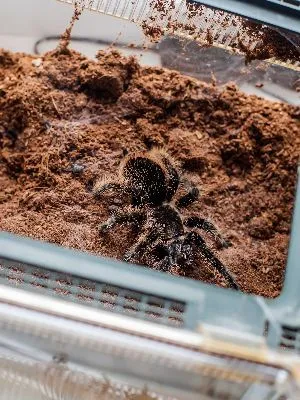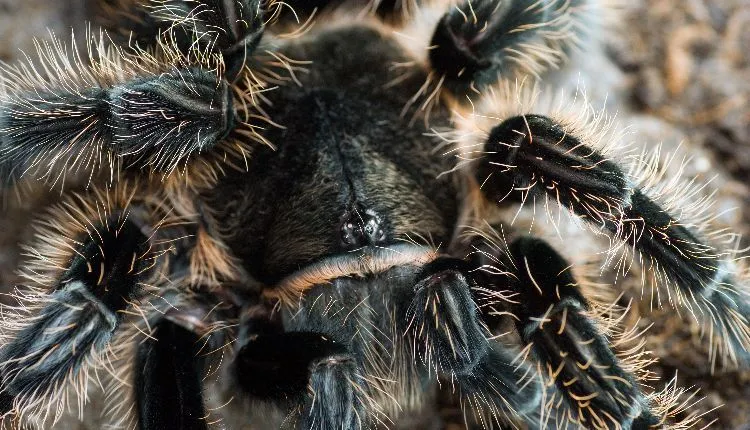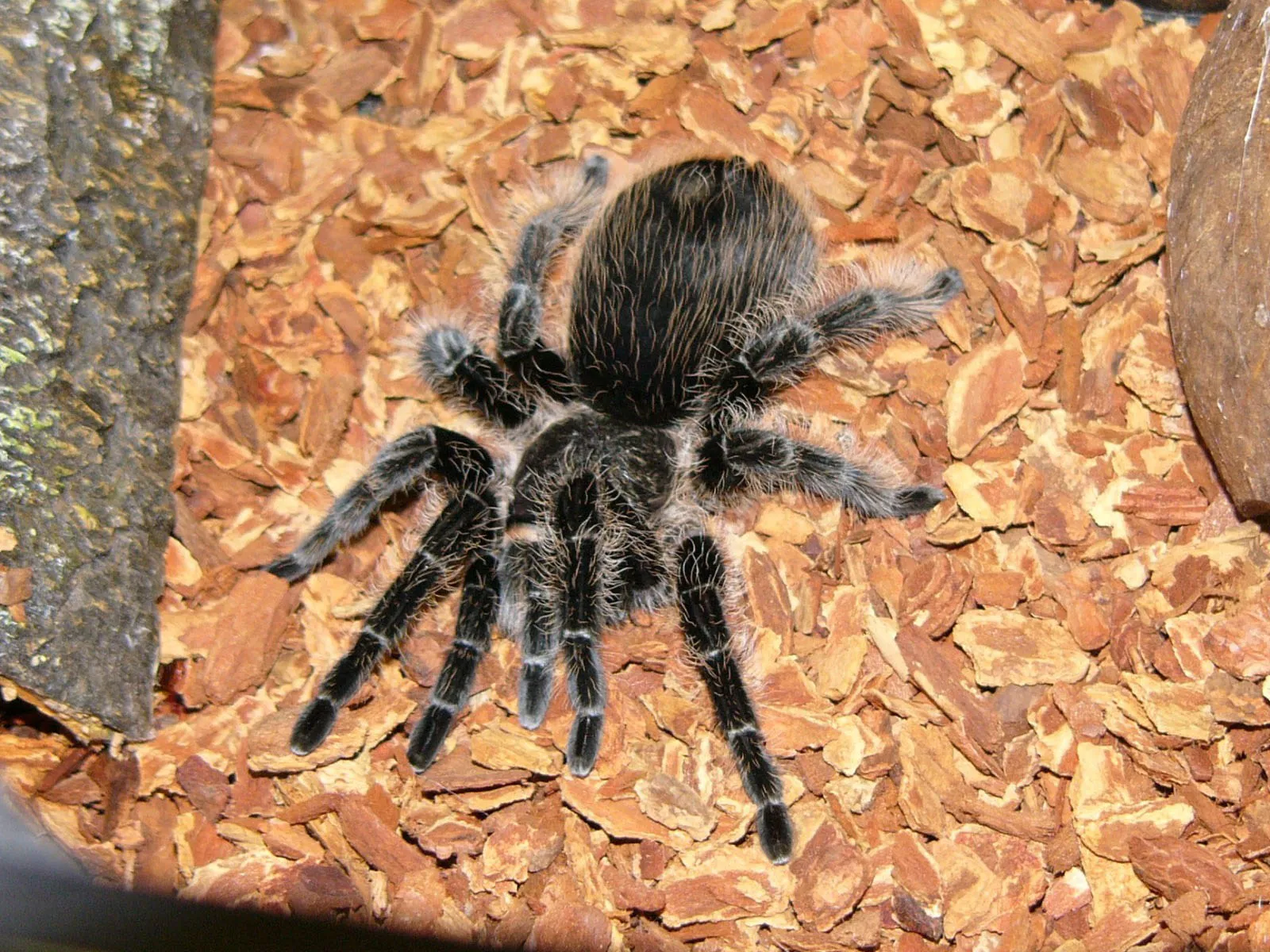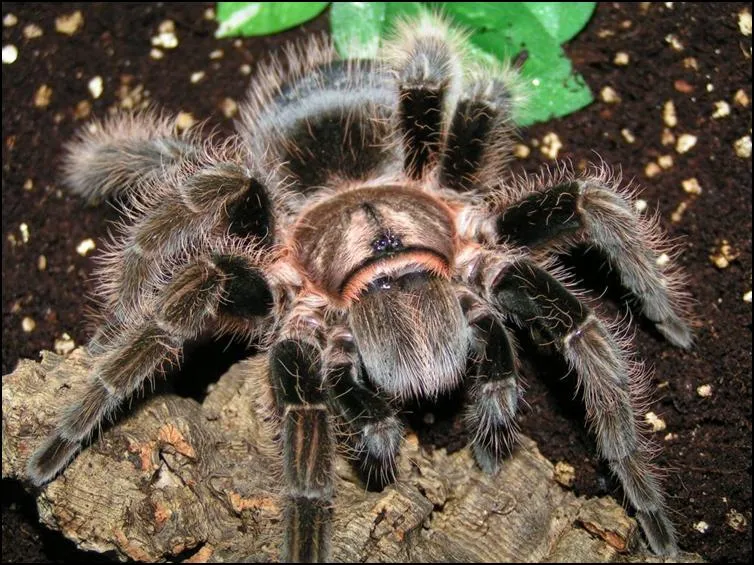Understanding the Curly Hair Tarantula
The Curly Hair Tarantula ( Tliltocatl albopilosus ), also known as the Honduran Curly Hair, is a popular choice for beginner tarantula keepers due to its docile temperament, beautiful appearance, and relatively easy care requirements. Native to the tropical rainforests of Central America, particularly Costa Rica, the curly hair tarantula has gained a reputation as a resilient and engaging pet. Their striking appearance, characterized by dark brown or black bodies covered in long, curly hairs that give them their name, adds to their appeal. Understanding their natural environment and behavior is the first step to providing optimal care and ensuring a long, healthy life for your tarantula. This comprehensive guide will provide you with the essential information to properly care for your Curly Hair Tarantula.
Origin and Habitat
Curly Hair Tarantulas originate from the rainforests of Central America, specifically Honduras, Costa Rica, and Nicaragua. In their natural habitat, these tarantulas are terrestrial, meaning they live on the ground. They create burrows or take refuge under logs, rocks, and leaf litter to protect themselves from predators and the elements. These environments typically offer high humidity and moderate temperatures. Replicating these conditions in captivity is crucial for the well-being of your tarantula. Understanding their natural environment will help you provide a habitat that meets their needs, promoting their health and happiness. This includes ensuring they have access to suitable substrate for burrowing, a consistent temperature, and the correct humidity levels.
Appearance and Characteristics

The most distinctive feature of the Curly Hair Tarantula is, of course, its hair. These tarantulas are covered in a coat of dark brown or black hairs, interspersed with golden, curly hairs, giving them a unique and attractive appearance. They are a medium-sized tarantula, with females typically reaching a leg span of up to 6 inches. Males are generally smaller and may have a slightly different coloration. The lifespan of Curly Hair Tarantulas varies, with females living significantly longer than males, often up to 10 years or more, while males typically live for 2-3 years after reaching maturity. Their docile nature makes them less prone to biting, though it’s always important to handle them with care and respect.
Setting Up the Perfect Habitat
Creating a suitable habitat is vital for your Curly Hair Tarantula’s health and well-being. The enclosure should provide a safe and comfortable environment that mimics their natural habitat. This involves selecting the right size and type of enclosure, choosing appropriate substrate and decor, and maintaining the correct temperature and humidity levels. A well-designed habitat will not only meet their physical needs but also provide enrichment, reducing stress and promoting natural behaviors such as burrowing and foraging. Careful attention to detail in the setup will contribute significantly to the overall health and happiness of your tarantula.
Enclosure Size and Type
The size of the enclosure should be appropriate for the size of your tarantula. As a general rule, the enclosure should be at least three times the tarantula’s leg span in width and length. A ten-gallon tank is generally sufficient for a juvenile, while a 20-gallon long tank or a similar-sized plastic enclosure is suitable for an adult. The enclosure should have a secure lid to prevent escapes and ensure the safety of your tarantula. Adequate ventilation is also important to prevent the buildup of excess humidity and mold. Ensure the enclosure is escape-proof, as these spiders are surprisingly adept at finding their way out. A front-opening enclosure can be advantageous, as it simplifies access for feeding and maintenance.
Substrate and Decor

The substrate is the bedding material in the enclosure and plays a crucial role in maintaining humidity and providing a burrowing substrate. A mixture of coconut fiber, peat moss, and a small amount of vermiculite is an excellent choice. This combination retains moisture well, allowing the tarantula to burrow naturally. The substrate should be at least 4-6 inches deep to allow the tarantula to burrow comfortably. Decorate the enclosure with cork bark, artificial plants, and hides to provide enrichment and hiding places. Avoid using sharp or abrasive objects that could injure your tarantula. Ensure the decor provides opportunities for the tarantula to feel secure and explore its environment. A water dish, appropriately sized, should also be included, and must be shallow enough to prevent drowning, with easy access for drinking.
Temperature and Humidity
Maintaining the correct temperature and humidity levels is critical for your Curly Hair Tarantula’s health. The ideal temperature range is between 75-85°F (24-29°C). A heating pad placed on the side of the enclosure can help maintain the correct temperature. Avoid placing the heating pad directly under the enclosure, as this could overheat the substrate. The humidity level should be maintained between 65-75%. You can measure humidity with a hygrometer. Regularly misting the enclosure with water, especially during the dry season, or providing a large water dish can help to maintain the humidity levels. Ensure that the enclosure has proper ventilation to prevent the growth of mold or fungus due to excessive humidity. Regularly monitor the temperature and humidity using a thermometer and hygrometer to make necessary adjustments.
Feeding Your Curly Hair Tarantula
Feeding your Curly Hair Tarantula the right food and at the right frequency is essential for their health and growth. Their diet should consist primarily of insects, offering a variety of options to provide a balanced and nutritious meal. Monitoring their feeding habits and ensuring proper hydration are also important aspects of their care. Overfeeding can lead to obesity, while underfeeding can stunt their growth, so understanding their dietary needs and the importance of regular hydration is crucial to ensuring a long and healthy life for your tarantula. The feeding process, while simple, requires thoughtful attention to the tarantula’s specific needs and preferences.
What to Feed

Curly Hair Tarantulas are primarily insectivores, meaning their diet consists of insects. Suitable food items include crickets, mealworms, dubia roaches, and other commercially available insects. It is essential to ensure that the insects are gut-loaded, meaning they have been fed a nutritious diet prior to being offered to your tarantula. This ensures that your tarantula receives the maximum nutritional value. Avoid feeding wild-caught insects, as they may carry parasites or pesticides. You can also occasionally offer pre-killed prey to reduce the risk of injury to your tarantula. Varying the diet with different insects will help provide a more balanced nutritional intake.
Feeding Frequency
The feeding frequency depends on the age and size of the tarantula. Spiderlings and juveniles should be fed more frequently, usually every 2-3 days, while adult tarantulas can be fed every 5-7 days. Adjust the feeding frequency based on your tarantula’s appetite and behavior. If your tarantula is refusing food, it could be a sign that it is about to molt. Always remove uneaten food within 24 hours to prevent mold or mites from developing in the enclosure. Observe your tarantula’s abdomen; a well-fed tarantula will have a plump abdomen, while a skinny abdomen may indicate underfeeding. Adjust portions based on your tarantula’s body condition and the speed at which it consumes its meals.
Watering and Hydration
Providing fresh water is crucial for your tarantula’s hydration. Always keep a shallow water dish in the enclosure, ensuring it is always full. The water dish should be shallow enough to prevent the tarantula from drowning. If you are keeping spiderlings, you can use a bottle cap with water-soaked cotton or a small, shallow dish. Mist the enclosure lightly once or twice a week to maintain humidity levels and provide additional hydration. Make sure to use dechlorinated water or bottled water to avoid exposing your tarantula to harmful chemicals. Regularly check the water dish and replace the water, ensuring it stays clean and free of debris. Hydration is a critical aspect of overall health, aiding in various physiological processes.
Handling and Safety Precautions

While Curly Hair Tarantulas are known for their docile nature, handling them is not always recommended, particularly for beginners. Tarantulas can be fragile, and even a short fall can cause serious injury. If you do choose to handle your tarantula, it’s important to take several precautions. Handling should only be done when necessary, and always with a calm and gentle approach. Recognizing the signs of stress and knowing what to do can minimize any potential harm to both you and the tarantula. Always prioritize the safety and well-being of your pet.
Safe Handling Practices
If you choose to handle your Curly Hair Tarantula, do so with care and a gentle approach. Handle the tarantula close to the ground or over a soft surface to minimize the risk of injury if it falls. Avoid sudden movements and loud noises, which can startle the tarantula. Wash your hands thoroughly before and after handling your tarantula to remove any oils or substances that could be harmful. Never force a tarantula to move or handle it if it appears stressed or defensive. Allow the tarantula to walk onto your hand, rather than grabbing or picking it up. Be patient and calm when handling your tarantula, as this will help it feel more secure. Always be mindful of the tarantula’s posture and behavior to avoid any unwanted interactions.
Recognizing Signs of Stress
It’s essential to recognize the signs of stress in your Curly Hair Tarantula to avoid unnecessary handling. Signs of stress include a defensive posture, such as raising its front legs or fangs, or flicking hairs (a defense mechanism). Rapid movements or a refusal to come out of its hiding place may also indicate stress. If your tarantula displays any of these behaviors, it is best to leave it alone and allow it to retreat to its enclosure. Avoid handling a tarantula that is about to molt, as they are more vulnerable during this time. If you are unsure whether your tarantula is stressed, it is always best to err on the side of caution and avoid handling it.
Common Health Issues and Solutions

Like all pets, Curly Hair Tarantulas can be susceptible to certain health issues. Understanding these issues and their potential solutions is crucial for maintaining a healthy tarantula. From the molting process to recognizing and treating common illnesses, knowing how to provide the best care is essential to ensuring a long and healthy life. Regular observation and a proactive approach to potential health problems are key to preventing serious issues and maintaining the well-being of your Curly Hair Tarantula.
Moulting Process
Moulting is a natural process where the tarantula sheds its exoskeleton to grow. During moulting, the tarantula will typically lose its appetite and may spend an extended time in a burrow or lying on its back. It’s essential not to disturb a tarantula during moulting. Provide adequate humidity to assist the process and avoid feeding until the new exoskeleton has hardened. The new exoskeleton will be soft and vulnerable after the moult, and the tarantula will require a period to harden. The moulting process may take several hours or even days. It is an important part of growth and should be allowed to proceed naturally, without interference. Once the exoskeleton has hardened, the tarantula can resume normal activities.
Identifying and Treating Common Illnesses
Common health issues include mites, fungal infections, and injuries. Mites can often be identified by small, moving parasites on the tarantula or in the enclosure. If you suspect mites, isolate the tarantula and clean the enclosure thoroughly. Fungal infections are often caused by excessive humidity. Ensure adequate ventilation and clean the enclosure regularly. Injuries can occur if the tarantula falls or is mishandled. If you notice an injury, provide a clean environment and consult a veterinarian specializing in exotic pets. Regular observation of your tarantula and its enclosure is crucial for early detection of any health problems. Providing the correct environmental conditions can help to prevent many common illnesses.
Conclusion

Caring for a Curly Hair Tarantula can be a rewarding experience. By providing the right habitat, diet, and handling practices, you can ensure that your tarantula thrives. Remember to always prioritize your tarantula’s well-being and observe its behavior for any signs of stress or illness. With the right knowledge and care, your Curly Hair Tarantula can be a fascinating and long-lived pet. Enjoy the journey of learning and caring for these amazing creatures. The information provided in this guide should serve as a strong foundation for providing excellent care for your Curly Hair Tarantula.
